Lycium barbarum
Lycium barbarum
1. The products in our compound library are selected from thousands of unique natural products; 2. It has the characteristics of diverse structure, diverse sources and wide coverage of activities; 3. Provide information on the activity of products from major journals, patents and research reports around the world, providing theoretical direction and research basis for further research and screening; 4. Free combination according to the type, source, target and disease of natural product; 5. The compound powder is placed in a covered tube and then discharged into a 10 x 10 cryostat; 6. Transport in ice pack or dry ice pack. Please store it at -20 °C as soon as possible after receiving the product, and use it as soon as possible after opening.
Natural products/compounds from Lycium barbarum
- Cat.No. Product Name CAS Number COA
-
BCN5906
Chlorogenic acid327-97-9
Instructions
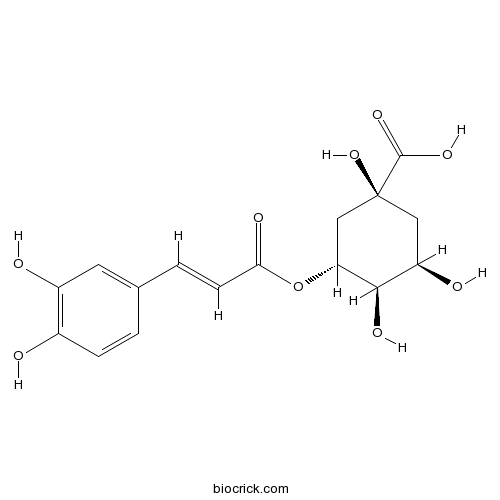
-
BCN5665
Quercitrin522-12-3
Instructions
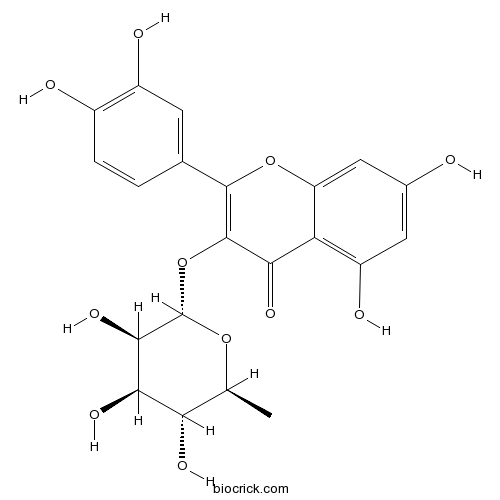
-
BCN5701
Scopolin531-44-2
Instructions
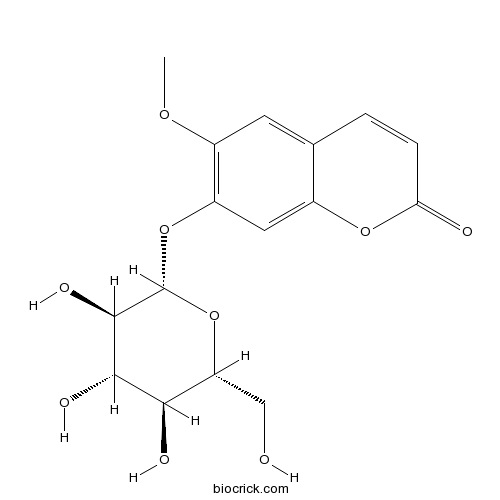
-
BCN4965
Beta-Carotene7235-40-7
Instructions

-
BCN4582
Isoscopoletin776-86-3
Instructions
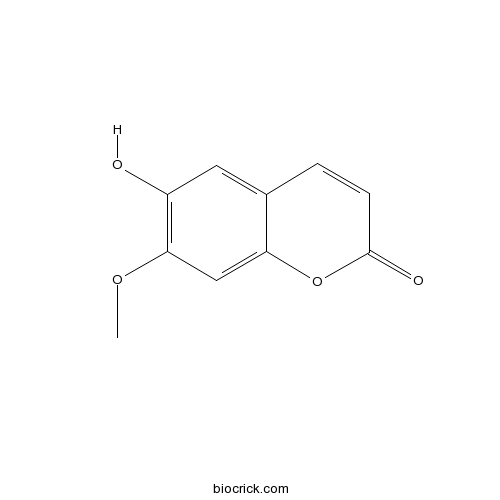
-
BCN6291
Arctigenin7770-78-7
Instructions
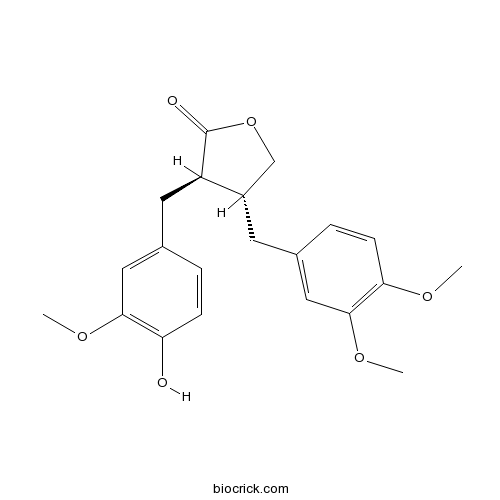
-
BCN1025
Nicotinamide98-92-0
Instructions

Lycium barbarum polysaccharides restore adverse structural remodelling and cardiac contractile dysfunction induced by overexpression of microRNA-1.[Pubmed: 30117672]
MicroRNA-1 (miR-1) stands out as the most prominent microRNA (miRNA) in regulating cardiac function and has been perceived as a new potential therapeutic target. Lycium barbarum polysaccharides (LBPs) are major active constituents of the traditional Chinese medicine based on L. barbarum. The purpose of this study was to exploit the cardioprotective effect and molecular mechanism of LBPs underlying heart failure. We found that LBPs significantly reduced the expression of myocardial miR-1. LBPs improved the abnormal ECG and indexes of cardiac functions in P-V loop detection in transgenic (Tg) mice with miR-1 overexpression. LBPs recovered morphological changes in sarcomeric assembly, intercalated disc and gap junction. LBPs reversed the reductions of CaM and cMLCK, the proteins targeted by miR-1. Similar trends were also obtained in their downstream effectors including the phosphorylation of MLC2v and both total level and phosphorylation of CaMKII and cMyBP-C. Collectively, LBPs restored adverse structural remodelling and improved cardiac contractile dysfunction induced by overexpression of miR-1. One of the plausible mechanisms was that LBPs down-regulated miR-1 expression and consequently reversed miR-1-induced repression of target proteins relevant to myocardial contractibility. LBPs could serve as a new, at least a very useful adjunctive, candidate for prevention and therapy of heart failure.
Comparative phenotype and microRNAome in developing anthers of wild-type and male-sterile Lycium barbarum L.[Pubmed: 30080623]
Lycium barbarum L. (L. barbarum) is an economically important plant, as its fruit is highly marketable for its healthy nutrient content. In this study, we characterized the anther development of a major cultivar (Ningqi No. 1) and a male-sterile mutant (Ningqi No. 5) of L. barbarum. We initially investigated the phenotypes of Ningqi No. 1 and Ningqi No. 5 using microscopy and chemical staining, which showed that Ningqi No. 5 failed in the degradation of anther callose, leading to an absence of mature pollen grains and thus to male sterility. Then, to understand the dynamic profile of miRNA expression during the development of the anthers, we collected anther samples from both Ningqi No. 1 and Ningqi No. 5 throughout anther development, and we further identified 137 novel miRNAs from these anther samples by using next-generation deep sequencing technology. Of these 137 novel miRNAs, 96 miRNAs were conserved miRNAs classified into 65 miRNA families, including a few well-known miRNA families related to anther development, such as miR156, miR159 and miR172. In addition, the remaining 41 miRNAs were considered lineage-specific miRNAs, which had no orthologues in other species. The expression data showed that 45 of the 137 miRNAs were differentially expressed in the different samples, including 4 Ningqi No. 5-specific miRNAs and 15 stage-specific miRNAs. The expression patterns of six miRNAs and their predicted targets were verified by Q-PCR, and one of miRNAs and its target were chosen for transient co-expression in Nicotiana benthamiana leaves to verify the correlations between the miRNA and its predicted target. Overall, the identification of the miRNAs in the anther development of Ningqi No. 1 and Ningqi No. 5 provides a valuable resource for understanding the molecular mechanisms of male sterility in L. barbarum.
Lycium barbarum polysaccharide attenuates diabetic testicular dysfunction via inhibition of the PI3K/Akt pathway-mediated abnormal autophagy in male mice.[Pubmed: 30073544]
Testicular dysfunction is one of the serious secondary complications in diabetes. Lycium barbarum polysaccharide (LBP) has long been considered to possess a wide range of beneficial properties including antiaging, anticancer and reproductive-enhancing. Abnormal autophagy was reported to play a significant role in accelerating diabetic reproductive injury. However, the autophagy regulation mechanism of LBP on diabetic testicular dysfunction is incompletely understood. We investigate the protective effects of LBP on diabetic testicular dysfunction and its underlying mechanism with different approaches. Protective effects of LBP (40 mg/kg) on testicular functions were assessed through the use of sperm parameters, testosterone levels and hematoxylin and eosin staining. Antioxidant capacity and serum malondialdehyde levels were determined using assay kits. Immune intensity of Beclin-1 and LC3I in testes was detected by immunofluorescence staining. Western blot analysis was used to detect expressions of p-PI3K, Akt, p-Akt, Beclin-1, LC3I and LC3II proteins. Q-PCR was used to evaluate Beclin-1 and LC3I mRNA expressions in testis. Administration of LBP (40 mg/kg) considerably recovered testicular function, obviously improved testicular histopathologic structure and significantly increased antioxidant enzyme activities. Immunofluorescence staining showed that immune intensity of Beclin-1 and LC3I significantly decreased in the LBP 40 mg/kg group. The results of Q-PCR and western blot analysis showed that LBP 40 mg/kg significantly downregulated Beclin-1 and LC3I protein expressions upregulated p-PI3K and p-Akt protein expressions and decreased Beclin-1 and LC3I mRNA expressions compared with diabetic mice. In conclusion, inhibition of PI3K/Akt pathway-mediated testicular excessive autophagy may be a target for protective effects of LBP on diabetic testicular dysfunction.
Carotenoid content of Goji berries: CIELAB, HPLC-DAD analyses and quantitative correlation.[Pubmed: 30064788]
Fruits of Lycium barbarum L. have been used in Chinese traditional medicine for centuries. In the last decade, there has been much interest in the potential health benefits of many biologically constituents of these fruits. The high level of carotenoids offers protection against development of cardiovascular diseases, diabetes and related comorbidities. In the present work two different selections of Lycium barbarum L., cultivated in Italy and coming from three discrete harvest stages, were subjected to two different grinding procedure and to a simplified extraction method of carotenoid component. CIELAB colorimetric analysis of the freshly prepared purees and HPLC-DAD analysis of carotenoid extracts were performed and compared. Different harvesting dates and grinding procedures deeply influence the carotenoids content and statistical analysis showed high correlation between carotenoid content and colorimetric data. The final model provides a reliable tool to directly assess carotenoid content by performing cheap and routinely colorimetric analyses for food industry.


